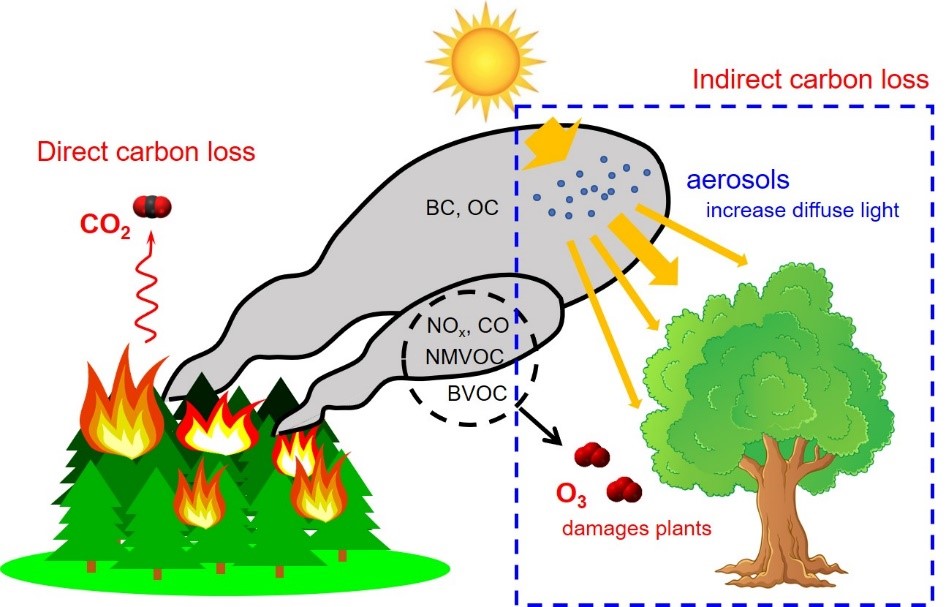
Every year, global fires directly emit 2 Pg C (billion-ton carbon) into atmosphere, which is ~20% of total emissions from human activities. In addition to the carbon emissions, fire plumes also generate air pollutants, including ozone (O3) and fine mode aerosols (e.g., PM2.5, particulate matter less than 2.5 μm in diameter).
These air pollutants may worsen air quality in the local and downwind regions. Recently, researchers at Institute of Atmospheric Physics (IAP) of Chinese Academy of Sciences explored the ecological impacts of fire air pollution. The finding was published in Nature Communications.
Increases in O3 and aerosols have opposite impacts on plant health. O3 is phytotoxic and reduces plant photosynthesis, while aerosols may promote photosynthesis by enhancing diffuse radiation. The net impacts of these pollutants on biosphere from the same fire are unclear.
This study combined three state-of-the-art models and a full set of observations from ground sites, satellites, and literature, to quantify the net impacts of fire O3 and aerosols on gross primary productivity (GPP), a metric representing total photosynthesis of forests.
Results showed that surface O3 reduces global GPP by 4.9 Pg C (3.6%) every year, in which fire O3 accounts for ~20%. In contrast, global aerosols enhance annual GPP by 1.0 Pg C (0.8%) with fire contributions of only 5%. The fertilization effect of fire aerosols is very limited, likely because fire emissions usually occur in tropical forests where dense cloud masks the aerosol effects. Consequently, the net impact of fire air pollution is dominated by O3, leaving a reduction of 0.9 Pg C (0.6%) in annual GPP.
Regionally, fire air pollution causes larger damages to forest productivity. For example, the 2006 large fire in Indonesia reduces local GPP by 3.6%.
Besides, GPP reductions of 0.6% in eastern U.S. and 0.5% in eastern China where fire events are very limited. In those regions, high level of background O3 from human activities provides such a sensitive environment that even a mild increase in O3 by fires can cause a discernable influence.
This study revealed a missing pathway of fire impacts on global carbon cycle, and the damage to ecosystem productivity not only occurs in fire regimes, but also over the downwind areas through long-range transport of air pollution. "Such negative impacts may exacerbate in the future as fire activities are expected to escalate in a warming climate," said YUE Xu from IAP, the first author of the study.

Indirect carbon loss caused by fire O3 and aerosols. (Image by YUE Xu)

86-10-68597521 (day)
86-10-68597289 (night)

52 Sanlihe Rd., Xicheng District,
Beijing, China (100864)

